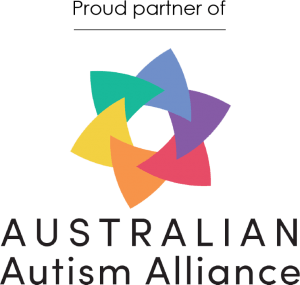People on the autism spectrum are just as likely as their typically developing peers to enjoy engaging with others in activities that interest them. Difficulties with social communication are however a diagnostic criterion for autism and they present in a spectrum of ways. Some people on the autism spectrum may seek social opportunities and may initiate social interactions themselves, others may enjoy social situations and interactions when they are initiated effectively by others. Many have a genuine desire for friendship but may find the process of making and sustaining friendships difficult.
“…everyone wants to inherently connect with others, it’s just through a different filter.” – Chris Varney – Founder and Chief Enabling Officer of the I CAN Network
A person on the autism spectrum may display a number of social communication differences. It is important to remember that not every item on the following list applies to all. They may:
- Not respond, or may take longer to respond, to verbal communication by other people
- Find eye contact uncomfortable
- Rarely use nonverbal gestures to communicate (for example, nodding their head or gesturing with their hands)
- Not take social cues from other people’s actions (for example lining up in a queue, stop talking when the teacher enters the room). People on the autism spectrum may need these “hidden” social rules to be explicitly taught
- Echo words they hear – they may repeat patterns of words without attaching any apparent meaning to them. They may be exceptional at mimicry and use this effectively to fit in socially.
- Have difficulty effectively communicating their own wants and needs. This often leads to frustration.
- Display a reduced tendency to share their interests with others, or the sharing is unequal (for example, the person may talk excessively about their own interests without referencing to see if the other person is interested).
“Striking up conversations with strangers is something like extreme sports for Autistic people” Kamran Nazeer
There are two particular social communication differences experienced by many people on the autism spectrum which provide insight into why social interactions are often challenging: predicting and interpreting others’ behaviour, and receptive and expressive communication differences.
Predicting and interpreting others’ behaviour
Theory of mind refers to the understanding that other people have different thoughts, desires and needs to you. It involves being able to “put yourself in someone else’s shoes”. Delayed development of theory of mind may impact on a person’s social interactions. He/she may have difficulty predicting and interpreting the behaviours of others and may also have trouble understanding the effects of their own behaviour on the people around them.
“It is an intellectual process, rather than intuitive, which is why socialising is draining”. Alex Sina
Individuals on the autism spectrum often have difficulty recognising and understanding social cues and therefore do not instinctively learn to adjust their behaviour to suit different social contexts.
People with autism may well have the potential to learn these skills however. See subsection “Supporting social development” for more information.
Receptive and expressive communication
Communication differences in autism can be divided into two different domains: receptive communication and expressive communication
Receptive communication
Receptive communication refers to the ability to understand the communicative attempts of others. This involves the ability to make sense of spoken language, body language, facial expressions and tone of voice. People on the autism spectrum may have difficulties in this area of communication.
Individuals with autism often understand language literally and have difficulty with understanding and using the natural rhythm in conversation. This can lead to frequent misunderstandings.
It is helpful when communicating with a person on the autism spectrum to be aware of their likely tendency towards concrete thinking. They may interpret language very literally and therefore have difficulties understanding figures of speech and metaphors. For example, when discussing the changes inherent in puberty, The Raising Children’s Network notes: “If you describe your son’s voice as ‘breaking’, your child might find this worrying. Instead you could say something like, ‘Your voice is changing and will get deeper’.”
“People say that you always have to tell the truth. But they do not mean this because you are not allowed to tell old people that they are old and you are not allowed to tell people if they smell funny or if a grown-up has made a fart. And you are not allowed to say, “I don’t like you,” unless that person has been horrible to you.” – Christopher, the fictional main character with Autism in the novel Curious Incident of the Dog in the Night Time.
Expressive communication
People on the autism spectrum may also show differences in their expressive communication – or using language and non-verbal behaviours to communicate a message or make themselves understood. They may show a variety of expressive communication differences. Some may experience ongoing significant delays in obtaining language; others may have a well-developed vocabulary but may use language in idiosyncratic ways.
Eye contact is another component of expressive communication. Some people on the autism spectrum may find maintaining eye contact uncomfortable, even painful, and may therefore unintentionally appear disinterested or rude.
“And now I know it is perfectly natural for me not to look at someone when I talk…In fact, I don’t really understand why it’s considered normal to stare at someone’s eyeballs.” – John Elder Robinson
Spoken language development
Some people on the autism spectrum do not develop the ability to use spoken language. However, they may use other forms of purposeful communication such as vocalisation (including crying and sounds to draw another’s attention), using gestures (such as signing, eye gaze, or pointing) or augmentative and alternative communication systems (such as picture based systems or communication technology).
Speech Generating Devices (SGDs) are an example of an augmentative and alternative communication system. Specific communication apps have also been developed which may be used on an iPad or Android tablet.
The Autism Association of Western Australia has developed an online resource, Autism Apps, that offers information about:
- how to use an iPad effectively
- how to support people with autism using technology
- tips for selecting a useful app
- Information related to the National Curriculum and Evidence Based Practice for supporting individuals with autism
“I am not able to talk out of my mouth, however I have found another way to communicate by spelling on my computer.”- Carly Fleishmann
Supporting social development
When people with autism experience social communication difficulties, their capacity and confidence to interact socially is affected. This section discusses ways in which the social development of people with autism can be supported.
Many people on the autism spectrum can successfully improve their social interaction skills. Teaching social skills generally involves three steps:
- Social skills and expectations are broken down into manageable steps;
- These steps are explained in concrete and visual ways; and
- Opportunities to practice new skills are provided.
Teaching social skills and expectations can have a positive effect on a person’s self-confidence and mental wellbeing. Some areas in which people on the autism spectrum may need individualised support include:
- Starting and maintaining conversations
- Asking for help
- Sharing
- Reading non-verbal cues
- Recognising emotional responses
- Becoming aware of appropriate proximity and personal space
- Learning to compromise and resolve conflict
- Coping with losing
- Protective and risk reduction behaviours
- Learning to deal with peer pressure
- Learning to deal with bullying
- Developing positive friendship skills
There are several useful resources for finding out more about supporting social development:
- Raising Children’s Network website – in particular, the article ‘Social skills for teenagers with autism spectrum disorder’.
- The National Autistic Society’s articles on Communication
Specific group programs aimed at helping the person with autism to develop social skills, such as the Secret Agent Society, may also be a helpful.
Unfortunately, some people on the autism spectrum experience anxiety in regards to social interaction as a result of their sustained social efforts, self-perceived social failures and sensory hypersensitivities. This may cause the person to withdraw and avoid interaction.
If you are concerned about the mental wellbeing of a child on the autism spectrum it is wise to seek expert help. Autism Tasmania’s Autism Advisors can help you find the right health or allied health professional to assist you and your child to navigate this challenging period.
An understanding of behavioural and sensory challenges experienced by people on the autism spectrum are intertwined with understanding the challenges presented by social communication differences.

 Autism Tasmania acknowledges the Australian Aboriginal people as the first inhabitants of the nation and the traditional custodians of the lands where we live, learn, and work.
Autism Tasmania acknowledges the Australian Aboriginal people as the first inhabitants of the nation and the traditional custodians of the lands where we live, learn, and work. 
